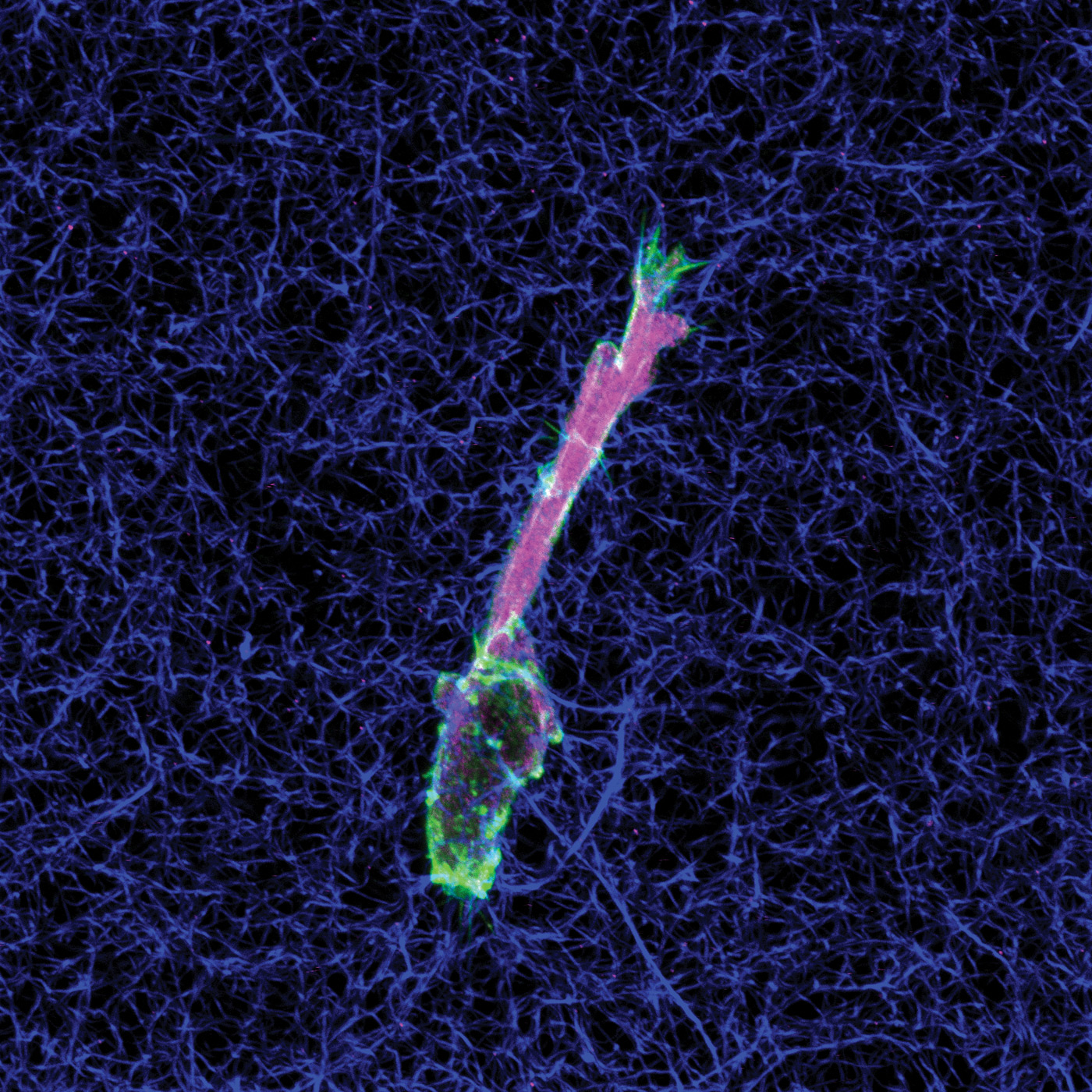
_Ryan Petrie
Petrie is a professor in the College of Arts and Sciences.
Cancer’s deadly nature lies largely in its ability to spread. When doctors can keep tumors contained and protect unaffected organs in the body, they can reduce cancer’s lethality.
So it follows that if doctors were able to pinpoint tumor cells and stop them in their tracks, it would go a long way toward limiting the damage done by cancer. New research from Drexel’s College of Arts and Sciences could have implications for the study of cancer cell migration by showing that certain tumor cells (fibrosarcoma) are unable to perform a certain kind of movement that normal connective tissue cells can perform.

On_the_March
A microscopic image of a tumor cell migrating through collagen. Petrie’s research studied cell movement — and lack thereof — in rat tail and cattle skin collagen.
Since cells’ nuclei are big and rigid, they can’t easily squeeze through three-dimensional structures. When such a structure (called a matrix at the cellular level) is encountered, normal cells can switch to a form of movement that creates a pressure differential inside the cell by moving the nucleus, like a piston in an engine. But a team led by Ryan Petrie, an assistant professor in the College of Arts and Sciences, found that fibrosarcoma cells can’t perform the piston-style movement when certain protease enzymes are present and highly active. The tumor cells are left to effectively chew their way through the matrix.
“Cell migration is a lethal characteristic of metastatic tumors, where malignant cells begin to move inappropriately and spread through the body to form secondary tumors,” Petrie says. “To fully understand the mechanisms which drive normal and pathological cell movement, we must study cell migration in three-dimensional environments, such as the ones found in our tissues.”
The research has implications beyond just fighting cancer cells.
“Promoting movement of fibroblasts in specific three-dimensional tissues like dermis [skin] and cartilage could help to heal difficult-to-treat wounds,” Petrie explains. “Understanding the fundamental molecular mechanisms driving the movement of these cell types will be essential for designing rational therapeutic strategies in the future.”
